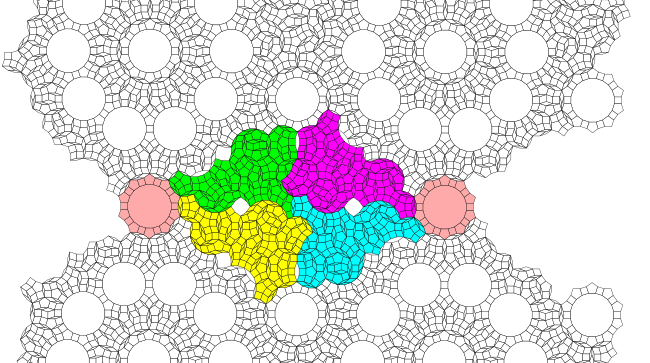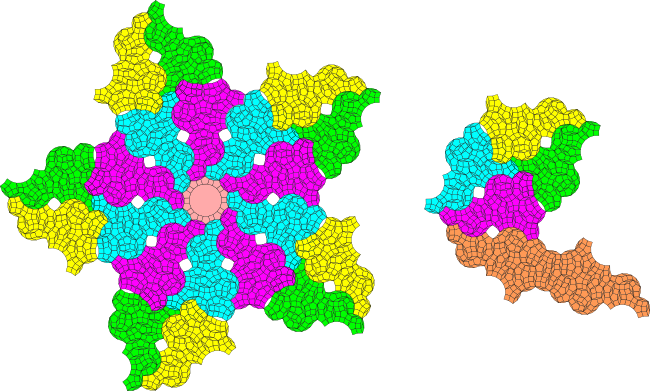Following the Dürer construction, we can rearrange four copies of the translational unit for the 4.5.20 thin tiling to create a gap that could be filled by a thick patch. As for the 5.5.10 thick tiling, it makes sense to first put a rose between the two vertical blocks.
This gap can be filled using four copies of the top half of the thin patch (above the watermelon), inflated squares and a few extra polygons on the edges.

However, the thin patches overlap. It may be possible to delete the overlapping tiles and perhaps some others and complete the thick patch but I have not yet been able to figure out how to do it.
As you can see from the image below, this shape acts just like a thick rhomb. Five copies can be arranged around a central point (with a 4.5.20 rose gap) and the shape fits together with the thin rhomb patch (leaving only an inflated square gap).

If the thick patch could be properly completed, then it would allow a substitution tiling which replaces a Penrose rhomb tiling with one that has an icosagon (20-sided polygon) at every vertex of the original tiling.
You can experiment yourself using this thick patch SVG file. The file also includes the 3π/10 fractional rhomb (the salmon-coloured tile) in case that is needed to complete the tiling.
If you find a solution (or a proof that one is impossible), then please email me at kevinjardine at yahoo dot com.
